- Joined
- May 7, 2014
- Messages
- 776
Hi everyone. a year or two I purchased a hardinge turret lathe. DVM-59. It does run. Came w the cross-slide, collets, 2 chucks and a bunch of tooling. Cost was under 3 bills. I have finally started my first so-so restoration. the plan is to come out of this looking far better than when I started! 
Tore down for sandblasting yesterday (my first time on that too). I have some basic questions if you are willing to suggest a few things for me.
1) The top turret adjustment cover-plate is cracked. someone braised it, but it is crooked. What I was thinking ?? a) try to mill that brass stuff off to clean it up and get it straight. ( see pics below) b) then do a v-groove grind w/ a re-weld from the bottom on it? (pic there too) There is room in the cavity. what would you do.
2) Sand blasting- wow is that messy. but so easy! My Q: It is taking a bit of material out of the spindle head and top parts. I understand Hardinge used some type of concrete-resin special thing for these casr parts. Anything special on the sandblasting of equipment in general?
I can smooth it all out w/ some filler and primer etc. bought some nice Oil base grey paint for her.
3) cleaning! filthy and 50 years of gunk. Q: If I go get a parts washer what should I soak them in to loosed all the crud and clean this stuff up?
3a- The cross slide chucks and turret mount - All dirty ugly brown. Would love to have them looking like this somehow: http://www.babinmachine.com/index.php?HARDINGEDV59
Pics: broken part:
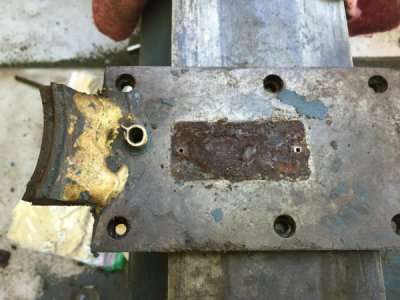
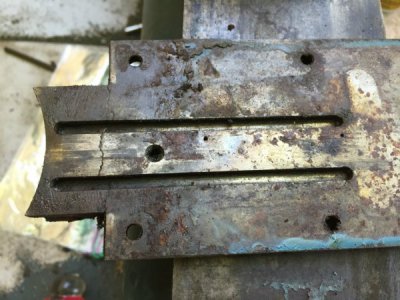
before and making progress on tear down. Long way to go yet.
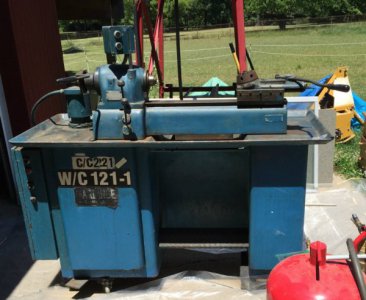
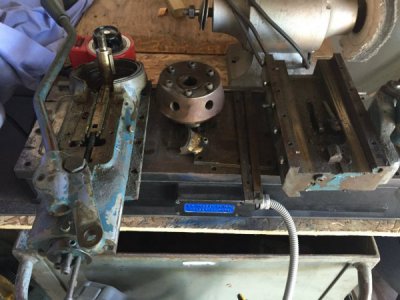
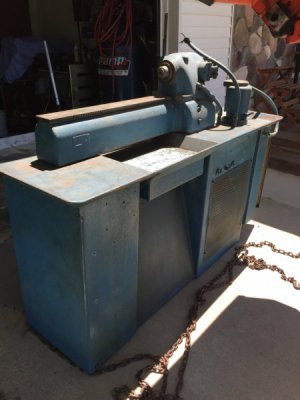
Tore down for sandblasting yesterday (my first time on that too). I have some basic questions if you are willing to suggest a few things for me.
1) The top turret adjustment cover-plate is cracked. someone braised it, but it is crooked. What I was thinking ?? a) try to mill that brass stuff off to clean it up and get it straight. ( see pics below) b) then do a v-groove grind w/ a re-weld from the bottom on it? (pic there too) There is room in the cavity. what would you do.
2) Sand blasting- wow is that messy. but so easy! My Q: It is taking a bit of material out of the spindle head and top parts. I understand Hardinge used some type of concrete-resin special thing for these casr parts. Anything special on the sandblasting of equipment in general?
I can smooth it all out w/ some filler and primer etc. bought some nice Oil base grey paint for her.
3) cleaning! filthy and 50 years of gunk. Q: If I go get a parts washer what should I soak them in to loosed all the crud and clean this stuff up?
3a- The cross slide chucks and turret mount - All dirty ugly brown. Would love to have them looking like this somehow: http://www.babinmachine.com/index.php?HARDINGEDV59
Pics: broken part:


before and making progress on tear down. Long way to go yet.



